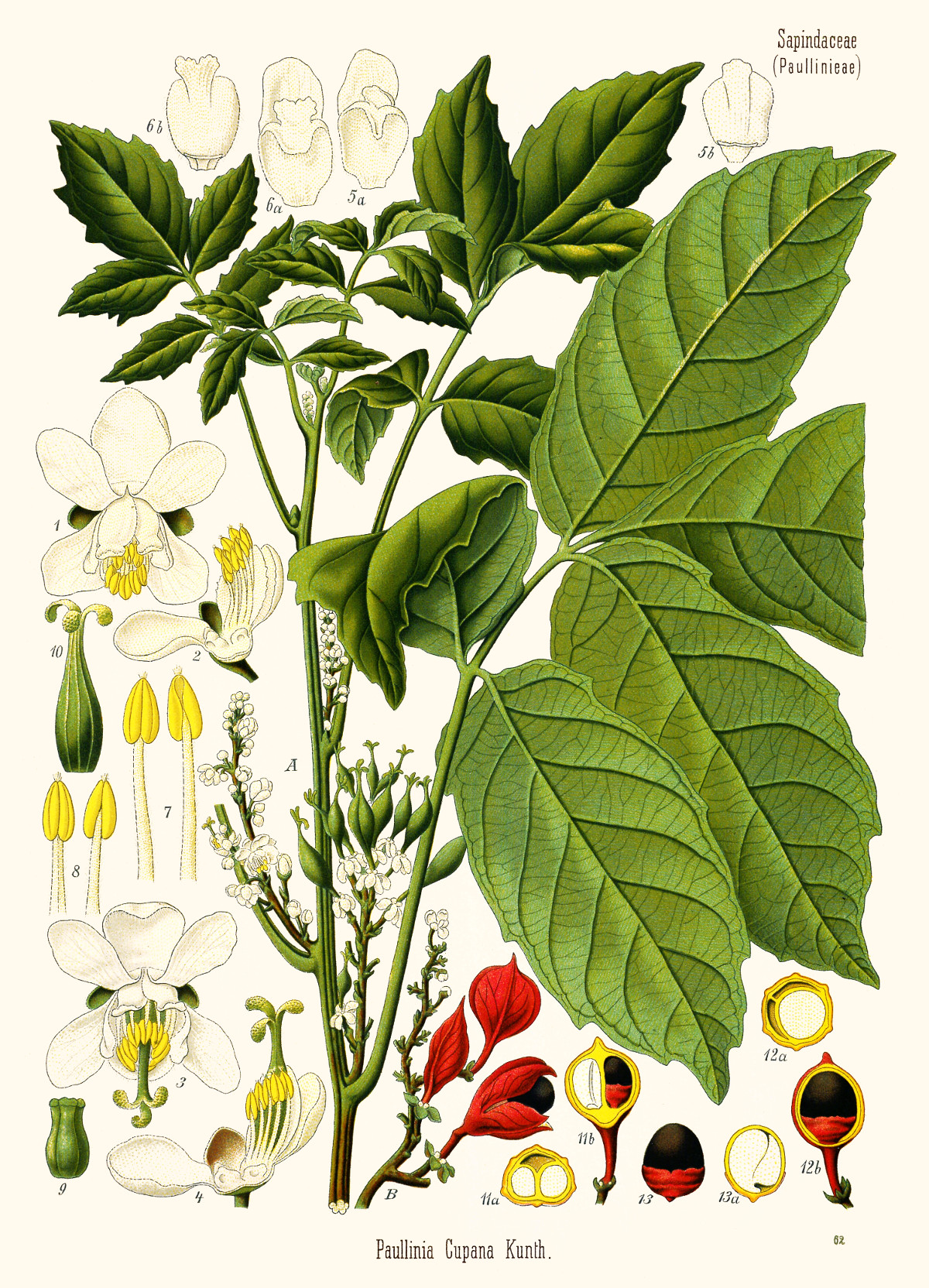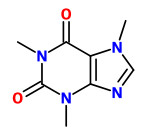Paullinia cupana Kunth - syn. Paullinia sorbilis (L.) Mart. - Sapindaceae
guaraná, cupana, Brazilian cocoa, Guarana, Guarana-Strauch
Liane, climbing with lateral branches, native to Rain Forests of Southern America (Brazil, Peru, Venezuela); leaves large, made up of several leaflets with toothed margins; paniculate inflorescences from the axils; flowers inconspiuous, yellowish; fruit a capsule, orange-red when ripe; seeds 1-3, black. The chapped fruits with white arils and black seeds resembling eyes, giving rise to legends.
„A fast-growing perennial, guaraná can be planted in the midst of manioc crops, allowing the formation of extensive orchards in the place of regenerating scrub once the manioc has been harvested. Traditional forms of guaraná agriculture practised by the Saterê-Mawé Indians compare favourably with the plantation system favoured by government agronomists.“
[Guarana (Paullinia cupana var. sorbilis): ecological and social perspectives on an economic plant of the central Amazon basin., Henman, A.R., Journal of ethnopharmacology, 6(3), 1982, 311-338]
„The Guaranís would make an herbal tea by shelling, washing and drying the seeds, followed by pounding them into a fine powder. The powder is kneaded into a dough and then shaped into cylinders. This product is known as guarana bread, which would be grated and then immersed into hot water along with sugar… Guarana is used in sweetened or carbonated soft drinks and energy shots, an ingredient of herbal teas or contained in capsules. Generally, South America obtains most of its caffeine from guarana.“ https://en.wikipedia.org/wiki/Guarana
To make guarana paste (lat. Pasta Guarana), the seeds are dried, roasted, peeled, and finely crushed, adding some water. The paste is formed and dried in the sun or over a smoldering. The pharmacological activity of guaraná-containing products is primarily due to methylxanthine alkaloids, mainly caffeine (3.6-5.8%), together with theobromine (0.03-0.17%) and theophylline (0.02-0.06%). The high yield of tannins (12%, including (+)-catechin 6% and (-)-epicatechin 3.8%) is also of pharmaceutical interest.
Guarana is traditionally used as a stimulating tonic (caffeine), diuretic (caffeine) and to treat mild diarrhea (tannins).
[Medicinal Plants of the World. Ben-Erik Van Wyk and Michael Wink, Pretoria 2004, 228]
[Wolfgang Blaschek ed., Wichtl - Teedrogen und Phytopharmaka: Ein Handbuch für die Praxis, 2015, 476-478]

Köhler,F.E., Medizinal Pflanzen, vol.3 t.62 (1890)
http://plantgenera.org/species.php?id_species=755465

